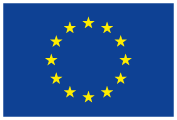Session II
Art & Design Interventionism and Long-term Participation: an Uneasy Relation?
Chairs: Liesbeth Huybrechts (University Hasselt) & Pablo Calderón Salazar (LUCA KU Leuven)
This track inquires how interventions can contribute to long-term participatory processes that address public space and public issues. Design and art interventions in public space are often driven by a wish to reclaim the common right to it and regularly use a ‘hit-and-run tactic’ (Gielen, 2013; Markussen, 2013). Besides art and design, other contexts (such as applied psychology) often use the concept of ‘intervention’ to refer to processes of acting upon and improving a perceived critical situation. Most definitions of interventions entail a traditional autonomous model, in which one person or a selected group of people decide whether a situation asks for a certain action with which they – unannounced, unadvertised and not commissioned – enter into a context (Markussen, 2013). Other approaches make use of the concept of intravention, with a special focus on the ‘intra-‘ to avoid creating a rupture in the context by initiating the actions from within (Altés & Lieberman, 2013). The nature of interventions, thus seems to be in contrast with the more horizontal approaches of participatory processes. Despite this apparent contradiction, interventions are frequently used by artists and designers in durational practices (O’Neill & Doherty, 2010). Interventionist approaches in specific (local) settings have the potential to democratize innovation by opening up spaces for inquiry and possibilities, rather than giving answers and solutions (Björgvinsson, Ehn & Hillgren, 2010). We want to explore different ways in which interventions contribute to these processes of democratisation of innovation (in public space) and address issues of public interest.
We welcome contributions that address:
– Historical perspectives on art and design interventions
– The participatory nature of art and design interventions
– The relations between interventions and time
– Interventions from within (intraventions)
– The role of interventions in democratising innovation and public space
– Ethical implications of interventions
We invite authors to submit papers presenting (critical/reflective) positions in relation to one or more of the above-mentioned topics. We encourage the use of fieldwork and case studies to enrich the discussion on the questions.


